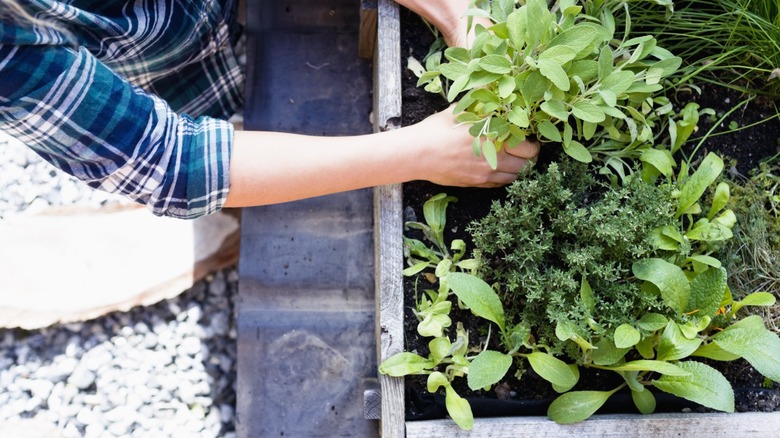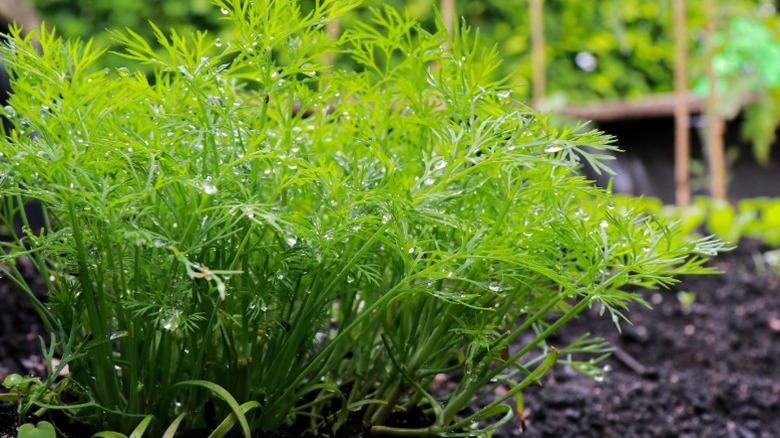The Flavorful Herb You'll Want To Add To Your Garden In Spring
As spring approaches, there is a buzz of excitement around most gardeners as they plan their plots. Along with mapping out and spacing your garden veggie plants, you need to decide which plants to grow. Dill (Anethum graveolens), a flavorful and versatile herb, might be overlooked in some people's plans. However, dill offers a variety of uses, from pickling to flower arrangements to seasoning, so you should consider sowing it in your spring garden. It's important to know when the last chance of frost is for your area, because that is your best opportunity to plant dill in the garden.
Dill is an annual aromatic herb originally native to southwest Asia and southern Europe. Because it is in the same family as carrots, dill grows a long taproot and does not transplant well. Those two factors mean that you need to sow dill seeds directly in your garden as soon as possible in early spring. When planting seeds in the garden, broadcast sow them in rows 2 feet apart, and cover them lightly with soil. Aim for a spot in the garden that gets plenty of bright, direct sunlight. After seedlings reach 2 inches, carefully thin the plants so that they are 10 to 12 inches apart, making space for mature plants that can grow up to 4 feet high and 2 to 3 feet wide, depending on the variety.
Why you should plant dill outdoors in spring
If you want to learn how to correctly time and prepare your garden after the last winter frost, find your region on the USDA Plant Hardiness Zone Map. This map shows your last expected frost date. While this can help you predict the date of the last spring frost, keep an eye on the weather and plant dill directly in your garden when there's no chance of frost in the forecast. Depending on your location, the right time to plant dill in spring might vary. For example, in Florida, dill is often planted between September and December, although gardeners grow it in spring further north. Dill doesn't do very well in very hot, dry conditions and will grow best when the temperature remains around 70 degrees.
Dill requires adequate light to thrive, which means it grows best in an outdoor garden. Plants sown indoors often require staking due to its spindly characteristics from lower light. When you plant dill outdoors, keep sowing seeds every few weeks to ensure a continuous crop while conditions are favorable. It's also recommended to grow dill near certain vegetables as a companion. Many gardeners use dill as a companion herb to protect potatoes from pests. Dill also does well near cucumber and broccoli plants, but should never be planted close to carrots.

